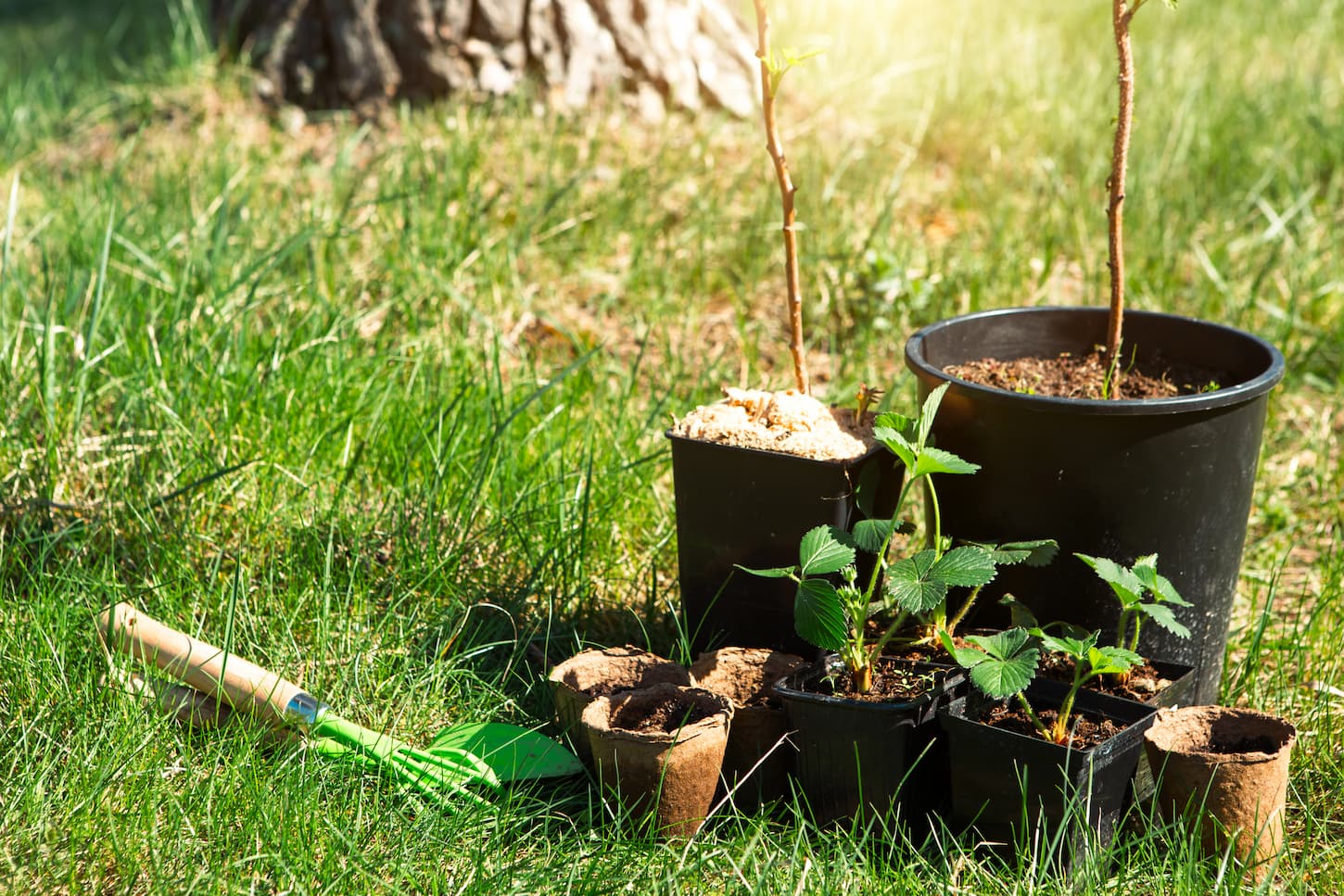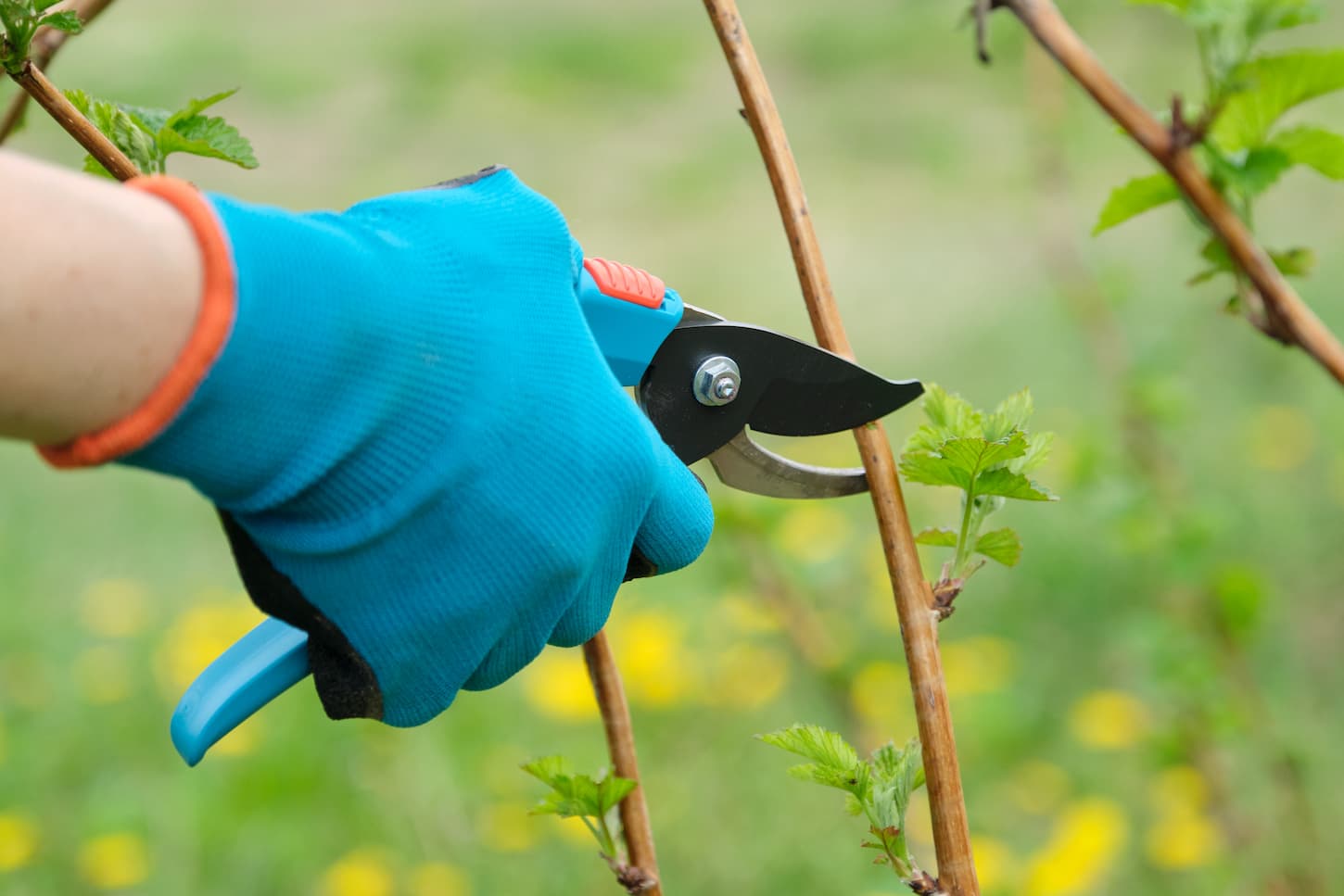Pruning is an important part of looking after raspberry bushes. It’s key to their health and can be the best way to get maximum results from them. However, it can be easy to forget to do! We’ve put together this guide to what you can expect if you haven’t managed to prune your raspberries.
Three things will happen if you do not prune your raspberries:
- Dead canes will overcrowd the patch, resulting in less room for new or producing canes.
- Berry size will decrease due to overcrowding, decreased airflow, and sunlight.
- Crop yield (total quantity) of your berry bushes will also be reduced.
That being said, there are several kinds of pruning you can do for your raspberry bushes, including various types of pruning. So make sure you know exactly what happens to raspberry bushes when you don’t prune them. You’ll definitely want to read on to find out more about these things and why they happen!

Here’s What Happens to the Canes if you Don’t Prune Raspberries
Not pruning back spent raspberry canes will cause the berry bush to look larger as it expands outward. The middle of the bush will be dead, though, as the spent canes prevent sunlight and other nutrients from reaching the middle of the plant. This will eventually damage the plant and harvest yields.
When you don’t prune raspberry bushes, the dead canes end up taking up a lot of space in the bush, which gets in the way of the growth of other more vigorous canes. The dead canes can block the light from the lower parts of the bush, and all the parts of the bush have to compete with each other for water and nutrients.
The denser the bush becomes, the more of the middle of the bush will be comprised of solely dead material. This is something of a missed opportunity, as it wastes valuable berry space! The bush becoming denser also creates dark damp conditions which can be a way for mold or funguses and infections to spawn.
Removing the weak or dead canes offers the opposite results. Each cane will have plenty of access to sunlight and is free to grow easily. When the bush is well pruned, it has light, ventilated conditions that are not only optimal for its growth, but also allow you to identify any problems such as mold, fungal infections, or pests.
Pro tip: prune away the spent canes. This will prevent diseases, overgrowth, dead plants, and all sorts of pests including snails.
Here’s What Happens to the Berry Size of Unpruned Raspberries
Not pruning spent raspberry canes can lead to smaller raspberries as fewer nutrients reach the producing canes. Not pruning growing canes (called topping) can also end in smaller berries. Topping canes leads to fewer but larger raspberries.
The competition for nutrients caused by crowded unpruned raspberry bushes creates problems for the growth of berries. Without the necessary things they need to grow, plants prioritize basic survival over putting their excess energy into making tasty berries. Because of this, berries on unpruned raspberry bushes are likely to be smaller and less delicious than those grown on carefully maintained bushes.
Of course, we all want to eat those big juicy delicious berries, so it’s better to get the pruning done and yield the results in the long run. Many sources of gardening advice also point out that even just a little pruning is better than nothing!
Here’s What Happens to the Overall Harvest Yield of Unpruned Raspberry Plants
Not pruning raspberries generally leads to a smaller overall harvest as the spent canes crowd out the yielding canes (reducing harvest yields). Untopped canes can lead to a larger number of raspberries, though they’ll generally all be smaller in size than if you topped the canes.
Unpruned raspberry bushes yield lesser results, as the space in the bush is taken up by dead plant material instead of prosperous ones where berries can grow. While it might seem counterproductive to the yield of the plant to remove canes, in the long run, this promotes healthier and bigger growth that will produce greater numbers of berries, and they’ll be of higher quality.
There’s some nuance to how to prune the plant properly. This will involve understanding the variety of raspberry well, most importantly understanding its growth cycle and how often it fruits. The color of the berry should also be taken into consideration, as black-colored raspberries have a slightly different process to those of the more usual red-colored ones.
To find out more about how to do this properly, check our Backyard Homestead HQ ultimate guide to pruning berries here (**coming soon**).
Pests that Live in Overgrown Raspberries
Overgrown, crowded raspberry bushes are a haven for pests. These range from insects and mites to fungi and weeds. Pests can eat and corrupt the crop of berries, or cause deeper problems by infecting the plant with diseases.
Pruning your bushes well can help prevent pests, but you’ll also need to make sure you are weeding and keeping an eye on your plants’ water source. Some pesticides are safe to use with raspberries, but consult state regulations before deciding to do this.
In general, it is much easier to prevent pests than to remove them. Practicing good pruning habits is therefore an effective method that can also save you further efforts down the line!
Here in Utah, the biggest pest problems I’ve found growing in our raspberry bushes when they get overgrown are snails – and they get everywhere!
Thankfully, pruning the canes regularly and letting our chickens forage in the garden (after the growing season is done, of course) means we haven’t seen a snail in our berry patch in several years.
Diseases that Afflict Unpruned Raspberry Bushes
Many diseases can afflict unpruned raspberry bushes. Some waterborne diseases may affect the roots, like Phytophthora root rot. Other afflictions can cause the plant to wilts, such as verticillium wilt, insect larvae growing inside the plant, or excessive wind exposure.
Cane diseases in particular often manifest in wet conditions and spread quickly amongst congested bushes. Pruning is a valuable weapon against these, creating open conditions that are difficult for fungi to survive in.
In fact, many of the afflictions that affect raspberry bushes can be prevented with pruning.
In particular, pest-borne diseases can be prevented, as can those which thrive in the moist dark conditions of an unpruned bush. At the very least, a well-pruned crop can be inspected easily, so diseases can be spotted early and treated before they become a serious issue. Even after pruning, you should keep an eye on your bushes, noting any discoloration, mold, or fungi quickly and removing it as quickly as you can.

Key Takeaways on NOT Pruning Raspberries
We’ve always worked hard to prune spent raspberry canes (also called floricanes) so that the bearing canes and primocanes (the canes that will bear next year’s fruit) we’ll have a good harvest. That being said, it’s only been of late that I’ve focused on topping the canes to continue to improve the harvest.
Topping the canes does several things.
- It helps control any winter damage to the canes – which is good if you haven’t read my article on How to Protect Raspberry Plants in Winter: A Step-by-Step Guide (so make sure you bookmark that to read for fall as you prepare your berry patch for winter). I didn’t top canes back then, but I do now.
- It also helps limit the number of berries you get so that the berries you do get are juicier, plumper, and much more delicious.
Seriously – it’s good to top the canes. Because while the extra quantity of berries seems like it’s worth the smaller size of berries, it really isn’t in my experience. Birds tend to get those smaller, upper berries anyway. Thankfully, they leave the lower berries alone. So not only do you get those berries, but you’ve also got smaller berries in the lower canes.
So go ahead and start topping your berries in addition to pruning back the dead canes – so that you can get the most delicious harvest possible. And make sure you read my ultimate guide to pruning – so that you know exactly what you need to do for any and every type of berry.
Now, if you need help knowing how to prune your specific raspberry variety, I’ve got you covered in this new article: Pruning Raspberries: The Complete Guide. Go give that a read next.
Resources
Learning from your own experience is essential, but learning from others is also intelligent. These are the sources used in this article and our research to be more informed as homesteaders.
- Pritts, Marvin P. “Raspberries.” Journal of Small Fruit & Viticulture, vol. 4, no. 3–4, 1997, pp. 189–225. Crossref, doi:10.1300/j065v04n03_02.
- Snyder, John. “Growing Raspberries in Washington.” Institute of Agricultural Services Bulletin No.401, January 1951. https://research.wsulibs.wsu.edu/xmlui/bitstream/handle/2376/8929/eb0401_1951.pdf?sequence=1&isAllowed=y